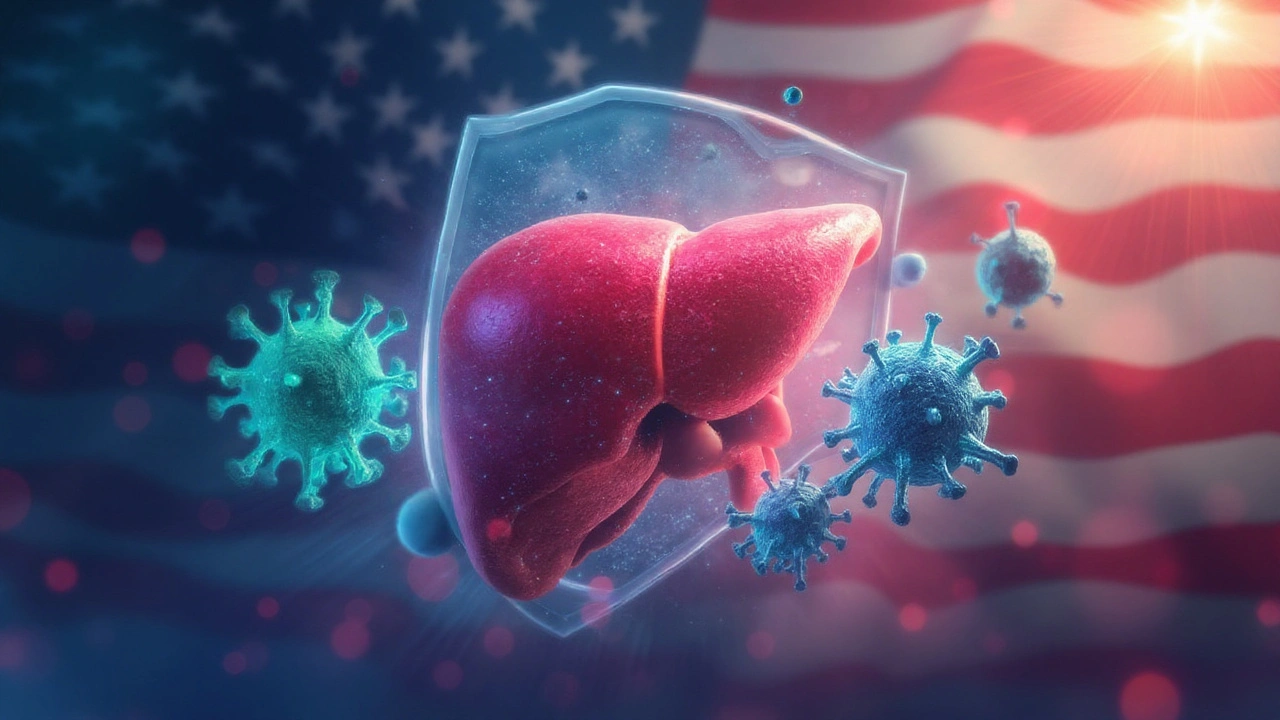Tenofovir is a nucleos(t)ide reverse transcriptase inhibitor (NRTI) that blocks the replication of HIV and hepatitisB viruses by mimicking the natural building blocks of viral DNA. First approved by the U.S. Food and Drug Administration (FDA) in 2001, it has become a cornerstone of modern antiretroviral therapy (ART). Patients worldwide rely on it to keep viral loads low and prevent disease progression.
Why Tenofovir matters in modern medicine
When doctors talk about "effective ART," Tenofovir is usually part of the conversation. Its high barrier to resistance means fewer treatment failures, and its once‑daily dosing fits busy lives. According to the World Health Organization (WHO), more than 20million people are on Tenofovir‑based regimens today.
How Tenofovir works at the cellular level
After oral intake, Tenofovir is converted inside cells to its active form, Tenofovir diphosphate. This molecule competes with natural nucleotides during viral DNA synthesis, causing premature chain termination. The result? The virus can’t copy its genetic material, so it can’t infect new cells.
Main clinical indications
- Human Immunodeficiency Virus (HIV) infection - as part of first‑line ART combos.
- HepatitisB virus (HBV) chronic infection - often combined with other antivirals for liver protection.
- Pre‑exposure prophylaxis (PrEP) for HIV - Tenofovir paired with emtricitabine is the approved regimen.
These uses share a common goal: keep the viral load undetectable, which translates to better health outcomes and lower transmission risk.
Two main formulations: TDF vs TAF
Tenofovir doesn’t stay in its original form when you swallow a pill. It’s packaged as either Tenofovir Disoproxil Fumarate (TDF) or Tenofovir Alafenamide (TAF). The two differ in how much of the drug reaches the bloodstream and, consequently, in their safety profiles.
| Attribute | TDF | TAF |
|---|---|---|
| Approved year | 2001 | 2015 |
| Typical dose | 300mg once daily | 25mg once daily |
| Plasma exposure | Higher | Lower (≈10% of TDF) |
| Renal toxicity risk | Notable - can raise serum creatinine | Minimal - safer for patients with CKD |
| Bone mineral density impact | Reduced BMD, especially in long‑term use | Less impact, suitable for older adults |
| Cost (US market, 2024) | ≈$15 per month (generic) | ≈$30 per month (brand & generic) |
Both deliver the same active metabolite inside cells, but TAF does so at a fraction of the dose, meaning less strain on kidneys and bones. For patients with pre‑existing renal disease or osteoporosis, clinicians often favor TAF.
Safety profile: what to watch for
Like any medication, Tenofovir comes with potential side‑effects. The most frequently discussed are renal toxicity and bone mineral density loss.
- Renal toxicity can appear as a rise in serum creatinine or reduced glomerular filtration rate (GFR). Monitoring kidney function every 3-6months is standard practice.
- Bone mineral density (BMD) loss is more common with long‑term TDF use, especially in younger patients and women.
- Gastrointestinal upset - mild nausea or diarrhea, usually transient.
- Rarely, hypersensitivity or lactic acidosis in patients with mitochondrial disorders.
Management is straightforward: switch from TDF to TAF if kidney tests dip, or add calcium and vitaminD supplements to protect bone health. In most cases, the benefits of viral suppression outweigh these risks.

Pharmacokinetics and drug interactions
Tenofovir is eliminated mainly by the kidneys through a combination of glomerular filtration and active tubular secretion. Co‑administration with drugs that affect renal transporters-like probenecid or certain antivirals-can raise Tenofovir levels and increase toxicity risk. Conversely, strong inducers of CYP3A4 don’t significantly affect Tenofovir because it’s not a major CYP substrate.
Adherence and resistance considerations
Sticking to a once‑daily pill is easier than juggling multiple doses, but missed doses still happen. Tenofovir has a high genetic barrier, meaning resistance develops slowly. The most common mutation is K65R, which reduces susceptibility but usually requires additional resistance mutations to cause treatment failure.
If a patient’s viral load rebounds, clinicians check adherence first, then order a resistance test. Switching to a TAF‑based regimen or adding a boosted protease inhibitor can rescue most failures.
Monitoring guidelines
- Baseline labs: HIV RNA, CD4 count, renal function (creatinine, eGFR), and BMD (if risk factors present).
- Follow‑up at 1 month, then every 3-6 months: viral load, kidney tests, and assessment of side‑effects.
- Pregnancy: Tenofovir is category B; it’s safe for both mother and fetus, but renal monitoring remains important.
- Older adults (>65years): consider TAF upfront to protect kidneys and bones.
Related concepts
Understanding Tenofovir also means grasping the broader landscape of HIV treatment. Integrase strand transfer inhibitors (INSTIs) like dolutegravir complement NRTIs for potent, rapid viral suppression. Meanwhile, Pre‑Exposure Prophylaxis (PrEP) relies on a Tenofovir‑emtricitabine combo to prevent acquisition in high‑risk groups. Finally, the rise of long‑acting injectable ART (cabotegravir + rilpivirine) may shift some patients away from daily pills, but Tenofovir will likely stay central for the foreseeable future.
Key take‑aways
- Tenofovir is a backbone NRTI used in HIV and HBV treatment.
- TDF and TAF deliver the same active drug; TAF offers better kidney and bone safety.
- Regular monitoring of renal function and bone health is essential, especially on TDF.
- Adherence remains the biggest predictor of success; resistance is rare but possible.
- Future therapies may diversify the regimen landscape, yet Tenofovir’s role stays strong.

Frequently Asked Questions
Can I take Tenofovir if I have mild kidney disease?
Yes, but doctors usually start you on the TAF formulation because it delivers the same antiviral effect with far less renal stress. Your kidney function will still be checked every few months.
Is Tenofovir safe during pregnancy?
Tenofovir is classified as pregnancy category B and is widely used in pregnant women living with HIV. It helps keep the viral load undetectable, reducing the risk of mother‑to‑child transmission. Kidney monitoring is still advised.
What’s the difference between TDF and TAF for bone health?
TDF can lower bone mineral density over years of use, especially in younger patients. TAF’s lower plasma concentration means far less impact on bone turnover, making it the preferred choice for anyone with osteoporosis risk.
How often should I get my viral load tested while on Tenofovir?
After starting therapy, the first check is at 4‑6 weeks. Once the virus is undetectable, most clinicians move to a 3‑month interval for the first year, then every 6 months if the load stays below detection.
Can I switch from TDF to TAF without changing other drugs?
Usually yes. TAF is designed to replace TDF in the same combination tablets (e.g., Truvada→Descovy). Your doctor will review any other meds to ensure no new interactions arise.
What should I do if I miss a dose of Tenofovir?
Take the missed pill as soon as you remember, unless it’s almost time for the next dose. In that case, skip the missed pill and continue with your regular schedule. Double‑dosing can increase toxicity risk.

dan koz
September 23, 2025 AT 07:59Tenofovir saved my life after I got diagnosed with HIV in 2018. I was scared AF, but once I started on TDF, my viral load dropped to undetectable in like 3 months. No more panic attacks, no more stigma whispers. Just me, my coffee, and my daily pill.
Kevin Estrada
September 24, 2025 AT 12:59Okay but why is everyone acting like TAF is some magical unicorn? I’ve been on TDF for 8 years and my kidneys are fine. This whole TAF vs TDF thing is just Big Pharma pushing expensive generics. Also, who even checks bone density unless you’re a grandma with osteoporosis? 😴
Katey Korzenietz
September 25, 2025 AT 14:54Ugh I HATE when people say TDF is 'fine'-it's NOT fine if you're a woman over 40. I lost 8% bone density in 2 years on it. My doctor switched me to TAF and I felt like I'd been given a new body. Also-why is no one talking about the fact that TAF is cheaper in Europe? The US is so greedy.
KAVYA VIJAYAN
September 26, 2025 AT 06:55Let’s talk about the real magic here: Tenofovir’s intracellular activation. Once it’s converted to Tenofovir diphosphate, it doesn’t just compete-it hijacks the polymerase active site like a molecular saboteur. The K65R mutation? That’s not resistance-it’s the virus screaming in frustration. And here’s the kicker: TAF’s prodrug design exploits hepatocyte-specific esterases to concentrate the active form right where the virus replicates. That’s not just pharmacology, that’s evolutionary warfare. Also, in India, generic TAF is now under $10/month thanks to Cipla. We’re not just treating HIV-we’re rewriting global health equity.
Jarid Drake
September 27, 2025 AT 04:51Been on TAF for 5 years now. No kidney issues, no bone loss, just a quiet life. I used to stress about missing a pill, but now? I just set a reminder and forget about it. Best part? I can finally eat tacos without worrying about my liver. Thanks, science.
Tariq Riaz
September 28, 2025 AT 12:34Interesting that no one mentions the 2023 meta-analysis showing TAF has a 14% higher rate of lipid elevation compared to TDF. Sure, kidneys are safer, but now we’re trading renal risk for cardiovascular risk. This isn’t a clean win-it’s a trade-off masked as progress.
Roderick MacDonald
September 30, 2025 AT 05:57Look, I get the fear of side effects, but let’s not forget what this drug does. Tenofovir isn’t just medicine-it’s a lifeline for millions. I’ve seen people in rural Kenya go from bedridden to teaching school kids because of this pill. Yes, TAF costs more, but so does a funeral. If you can afford a latte every day, you can afford to protect someone’s kidneys. This isn’t about pills-it’s about dignity. And if you’re still arguing about cost over life, maybe you need to check your priorities.
Chantel Totten
October 1, 2025 AT 08:26Thank you for writing this with such clarity. I’m a nurse and I see how confused patients get with TDF vs TAF. This breakdown helps me explain it without jargon. I especially appreciate the monitoring guidelines-so many clinics skip the baseline BMD scans. Small things matter.
Guy Knudsen
October 1, 2025 AT 22:54Actually the WHO guidelines from 2022 don't prioritize TAF over TDF in all cases-only where renal risk is documented. Most global programs still use TDF because it's cheaper and equally effective in healthy populations. The whole TAF hype is mostly American